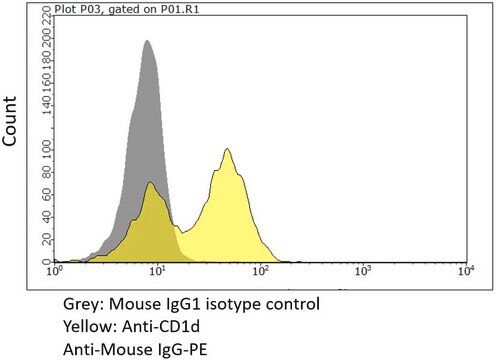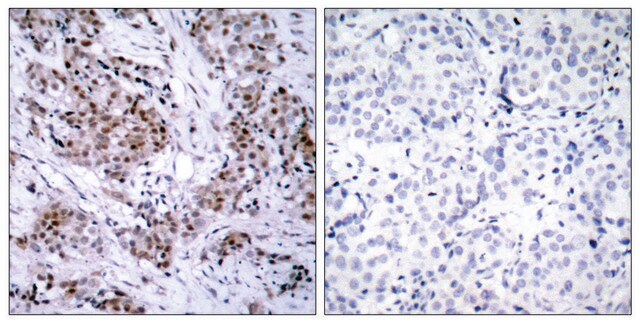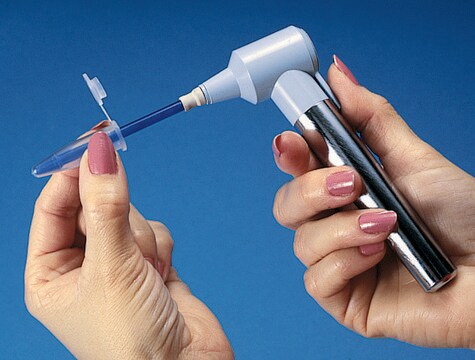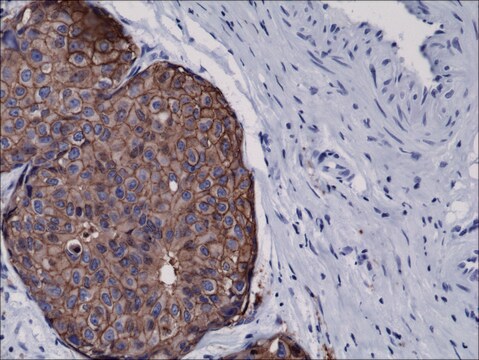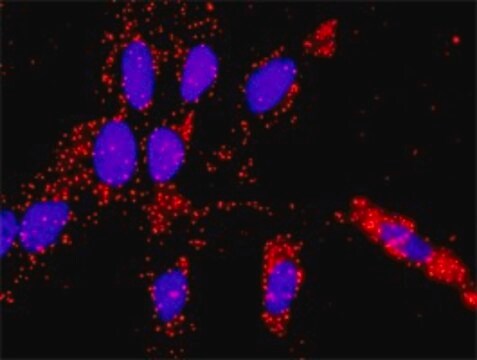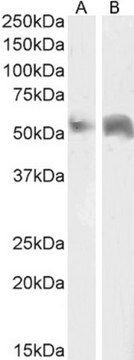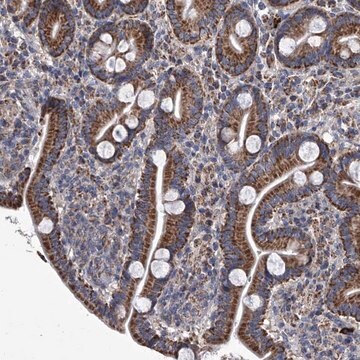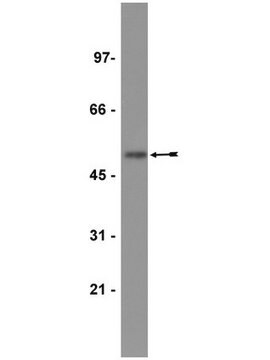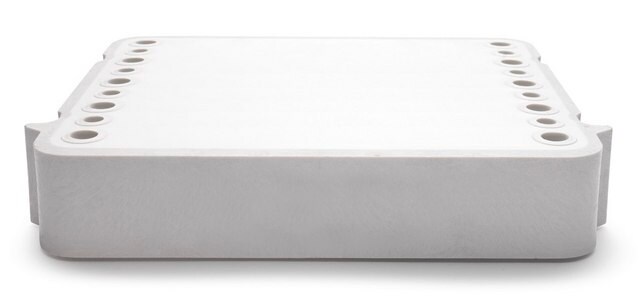MABC983
Anti-CD1d Antibody, clone D5
clone D5, from mouse
Synonim(y):
Antigen-presenting glycoprotein CD1d, R3G1, CD1d
About This Item
Polecane produkty
pochodzenie biologiczne
mouse
Poziom jakości
forma przeciwciała
purified antibody
rodzaj przeciwciała
primary antibodies
klon
D5, monoclonal
reaktywność gatunkowa
human
metody
immunoprecipitation (IP): suitable
western blot: suitable
izotyp
IgG2bκ
numer dostępu NCBI
numer dostępu UniProt
Warunki transportu
wet ice
docelowa modyfikacja potranslacyjna
unmodified
informacje o genach
human ... CD1D(912)
Opis ogólny
Immunogen
Zastosowanie
Apoptosis & Cancer
Apoptosis - Additional
Western Blotting Analysis: A representative lot detected exogenously expressed CD1d in CD1d-transfected C1R human lymphoblastoid cells (Kim, H.S., et al. (1999). J Biol Chem. 274(14):9289-9295).
Immunoprecipitation Analysis: A representative lot immunoprecipitated intact as well as degraded CD1d from human penile urethral epithelial (PURL) cells following C. trachomatis (Kawana, K., et al. (2007). J Biol Chem. 282(10):7368-7375).
Immunoprecipitation Analysis: A representative lot immunoprecipitated exogenously expressed CD1d independent of glycosylation states from lysates of CD1d-transfected FO-1 human melanoma cells (Kim, H.S., et al. (1999). J Biol Chem. 274(14):9289-9295).
Jakość
Western Blotting Analysis: 4.0 µg/mL of this antibody detected CD1d in 10 µg of THP-1 cell lysate.
Note: Longer exposure time is needed when using total lysates for Western blotting applications. Membrane preparation or immunoprecipitation can be employed to enrich membrane target proteins prior to Western blotting.
Opis wartości docelowych
Postać fizyczna
Przechowywanie i stabilność
Inne uwagi
Oświadczenie o zrzeczeniu się odpowiedzialności
Nie możesz znaleźć właściwego produktu?
Wypróbuj nasz Narzędzie selektora produktów.
Kod klasy składowania
12 - Non Combustible Liquids
Klasa zagrożenia wodnego (WGK)
WGK 1
Temperatura zapłonu (°F)
Not applicable
Temperatura zapłonu (°C)
Not applicable
Certyfikaty analizy (CoA)
Poszukaj Certyfikaty analizy (CoA), wpisując numer partii/serii produktów. Numery serii i partii można znaleźć na etykiecie produktu po słowach „seria” lub „partia”.
Masz już ten produkt?
Dokumenty związane z niedawno zakupionymi produktami zostały zamieszczone w Bibliotece dokumentów.
Nasz zespół naukowców ma doświadczenie we wszystkich obszarach badań, w tym w naukach przyrodniczych, materiałoznawstwie, syntezie chemicznej, chromatografii, analityce i wielu innych dziedzinach.
Skontaktuj się z zespołem ds. pomocy technicznej